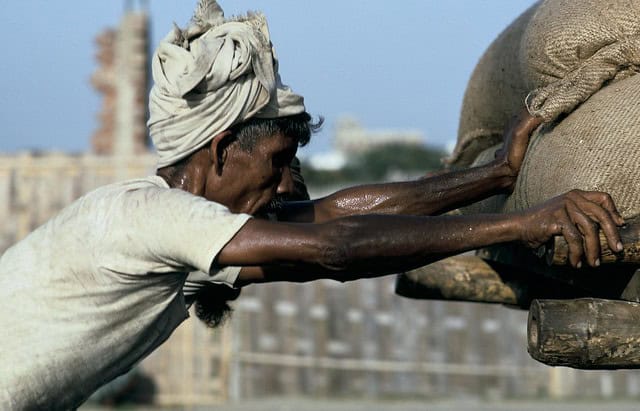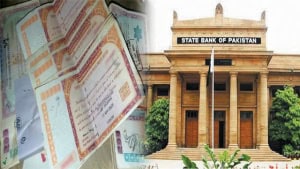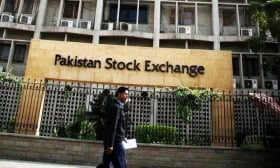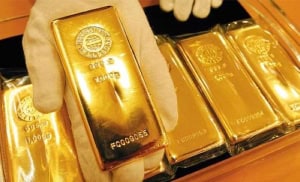WASHINGTON – Pakistan’s growth is expected to slow further to 2.7% in next fiscal year, which begins July 16, as domestic demand remains depressed and as current account and fiscal deficits diminish only gradually, according to a new report by the World Bank.
The World Bank has lowered its expectations of global economic growth for this year in June 2019 Global Economic Prospects: Heightened Tensions, Subdued Investment, saying that although the picture for poorer countries is expected to stabilize in 2020, economic momentum remains weak.
https://twitter.com/WorldBankSAsia/status/1136671776619028483
South Asia Outlook
South Asia continued to enjoy solid economic activity in 2018, posting 7 percent GDP growth due to robust domestic demand amid weakening trade and manufacturing. Regional output is estimated to have expanded by 7 percent in 2018. Economic activity was underpinned by strong private domestic demand.
Pakistan was a notable exception, with a broad-based weakening of domestic demand over the past year against the backdrop of tightening policies aimed at addressing the country’s macroeconomic imbalances. The country’s growth is estimated to decelerate to 3.4% in FY 2018/19, which ends July 15.
Pakistan has recently experienced a significant rise in inflation driven by currency depreciation, which was followed by several policy rate hikes over the course of FY2018/19. There has been limited progress in fiscal consolidation in the region.
However, private consumption and investment remained robust in much of the region, offsetting a slowdown in Pakistan.
Government spending growth moderated in 2018, expanding closer to historical averages following rapid growth in 2017. Net exports continued to contribute negatively to regional growth, with import growth remaining stronger than export growth amid solid domestic demand.
Pakistani authorities have revised the growth estimate for FY2017/18 from 5.8 percent to 5.2 percent in February 2019.
In India, the largest economy in the region, GDP grew by 7.2 percent in FY2018/19 (April 1, 2018 to March 31, 2019)—the same pace as shown for the previous year by upwardly revised data.
Growth in India is projected to further accelerate to 7.5% in FY 2019/20, which begins April 1. Private consumption and investment will benefit from strengthening credit growth in an environment of more accommodative monetary policy, and with inflation below the Reserve Bank of India’s target.
Bangladesh’s growth is projected to pick up to 7.4% in FY 2019/20, which begins July 1, underpinned by strong infrastructure spending and solid private investment.
Sri Lanka is forecast to accelerate to 3.6% in 2020 supported by a pickup in services sector activity and solid infrastructure investment.
Economic activity in Afghanistan is forecast to expand 2.4% in 2019, Nepal’s GDP is projected to grow 6.4% in FY 2019/20, which begins July 16, and Bhutan is expected to hold steady at 5.4% in FY 2019/20, which begins July 1.
Regional growth is projected to remain close to 7 percent a year over the forecast horizon, as it continues to benefit from strong private consumption and investment. The main risks to the outlook include a re-escalation of political uncertainty and regional tensions, financial sector weakness due to nonperforming assets, fiscal challenges amid elections in several countries, and a sharper-than-expected weakening of growth in
South Asia, as a net oil-importing region, is vulnerable to oil price spikes. A sudden increase in oil prices would tend to worsen current account balances and elevate inflation in the region.
South Asia is also vulnerable to the effects of climate change, such as natural disasters, which tend both to increase inflation and weigh on activity through supply disruptions, especially in the agricultural sector.
The WB report forecasts that high external debt and low international reserves could limit the policy room to address external shocks in some countries (Pakistan, Sri Lanka).
Global growth should tick higher to 2.7%
The economists at the World Bank say that they now see the global economy expanding 2.6% this year, down from its previous estimate of 2.9%. Economists’ estimates have been declining since mid-last year.
For 2019, the World Bank said that growth should tick higher to 2.7%.
https://twitter.com/WorldBank/status/1136257684422967296
The risks to emerging and developing economies include rising trade barriers, slow investment, and economic slowdowns in richer countries. “Stronger economic growth is essential to reducing poverty and improving living standards,” said World Bank Group President, David Malpass, in a statement released in Washington.
All regions affected by slowdown
Amongst the developed economies, the Euro Area will see the biggest slowdown, due to weaker exports and investment, with growth at around 1.4% in 2020-2021. As for the United States, a growth figure of 2.5% in 2019, will drop to 1.7% next year.
In emerging markets, the projected growth rate of 4% for 2019 represents a four-year low, and several economies are coping with financial stress and political uncertainty. However, A recovery is expected next year, with a forecasted rate of 4.6% for 2020. The World Bank recommends in the report that these countries need to strike a careful balance between borrowing to promote growth and avoiding risks associated with excessive borrowing.
“While almost every economy faces headwinds, the poorest countries face the most daunting challenges because of fragility, geographic isolation, and entrenched poverty,” said World Bank Group Vice President for Equitable Growth, Finance and Institutions, Ceyla Pazarbasioglu. “Unless they can get onto a faster growth trajectory, the goal of lowering extreme poverty under 3 percent by 2030 will remain unreachable.”
















